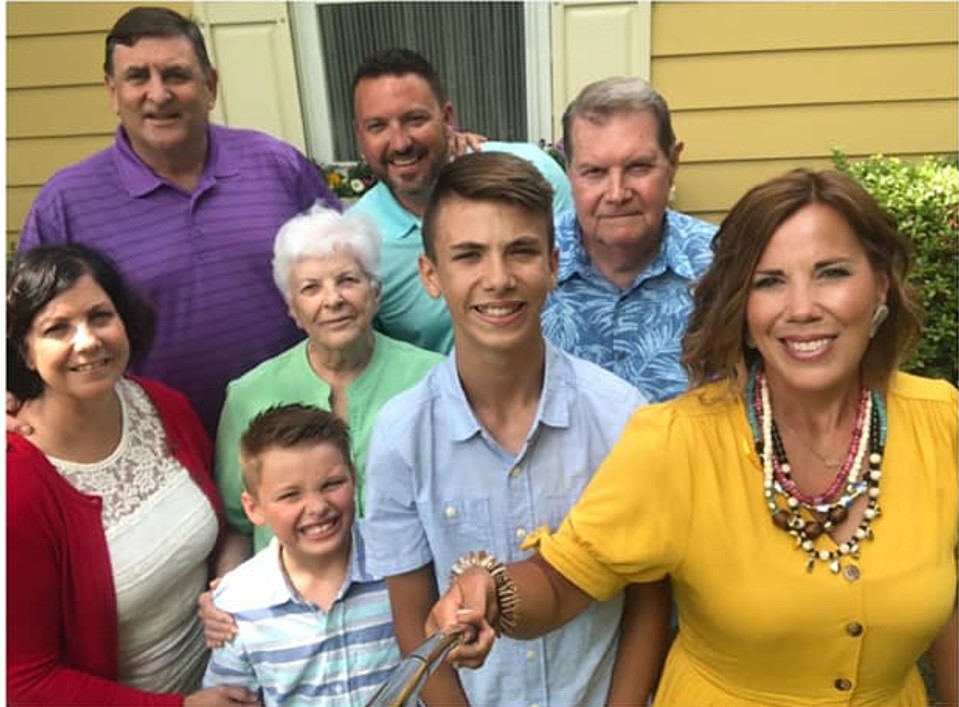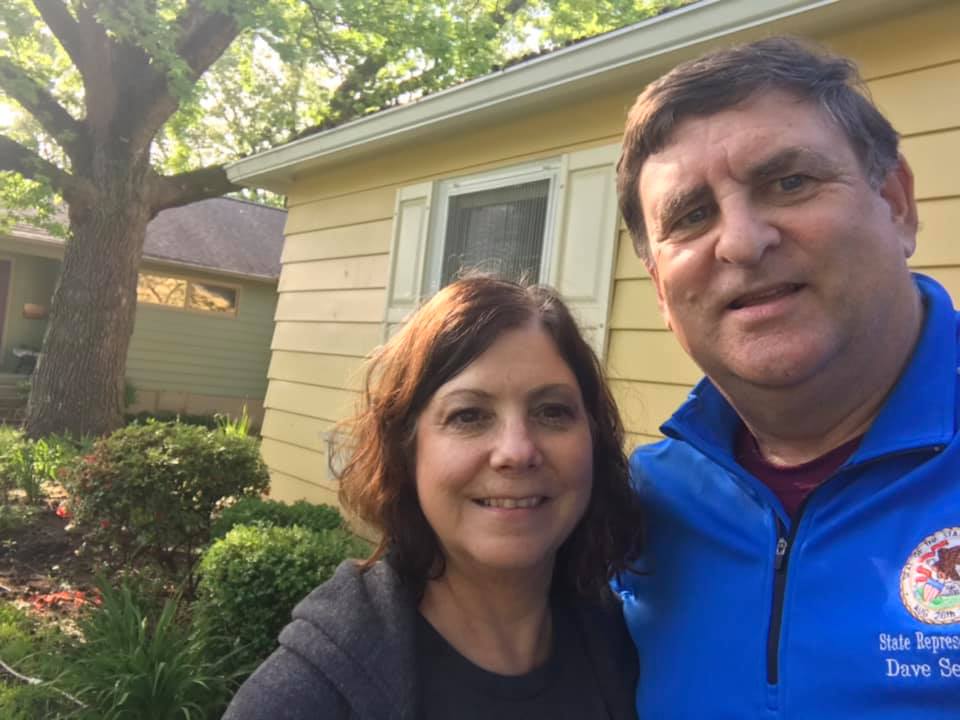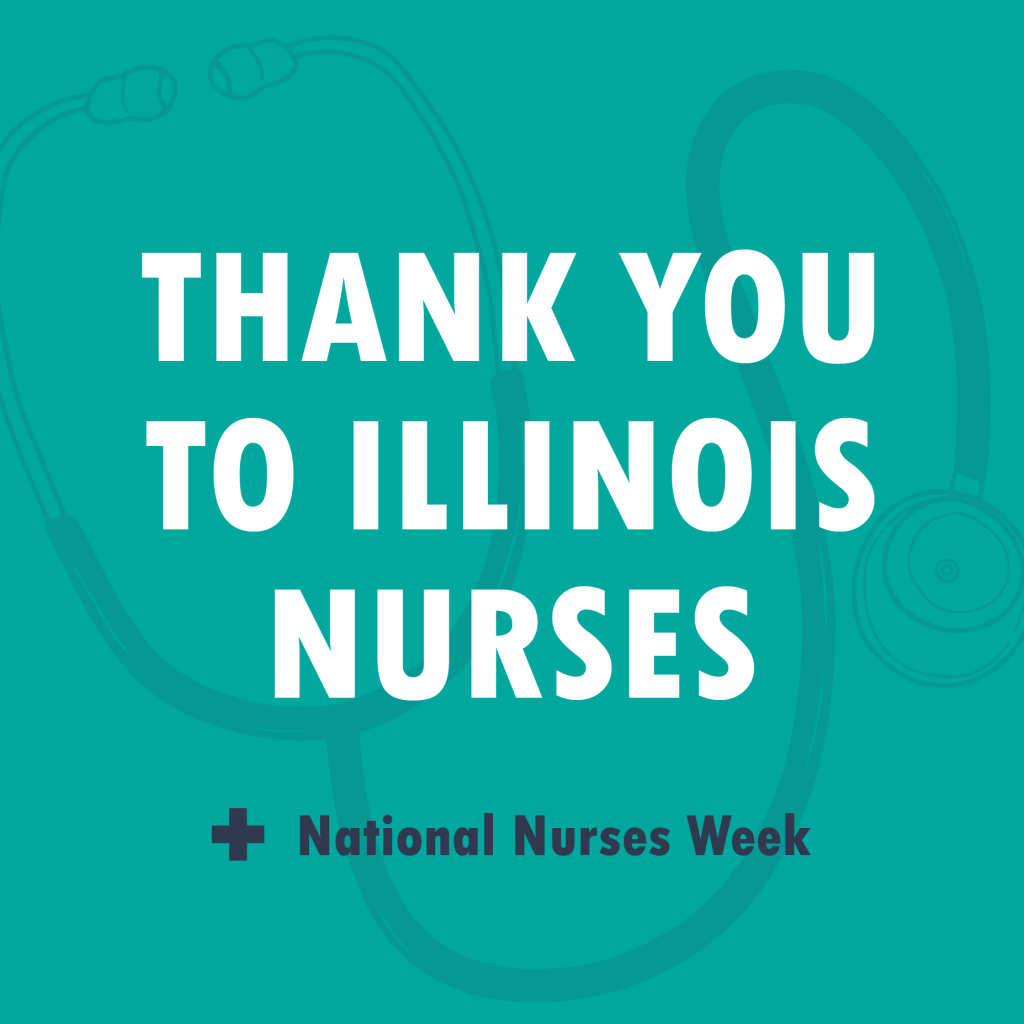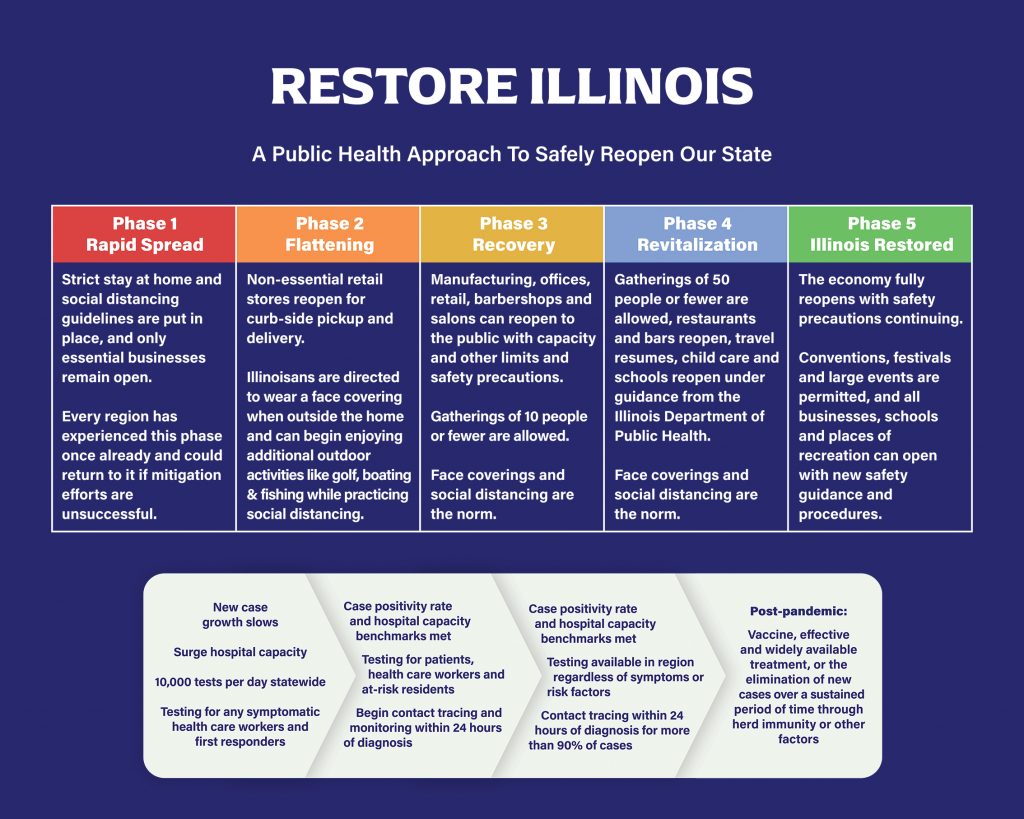Dear Friend,
Before I get to this week’s detail-heavy edition of Severin Says, I am heartened this week to share several positive items with you.
On this Mother’s Day 2020 week, we also celebrated National Nurse’s Day, National Teacher Appreciation Day and Week, and a National Day of Prayer in America. We are blessed to live in a free country, where we can honor some of our REAL heroes and worship God how we see fit.
Happy Mother’s Day!
This Sunday May 10 is Mother’s Day! Thank you to all the moms and grandmas out there that have given their all to raise us right and guide us as we’ve grown. I miss my mother every day, and I know some of you out there do too. I want to say a special Happy Mother’s Day to my wife Penny, who is Travis’ mom – and to Melissa Severin – the mother of my two grandsons. To all, please take a moment this weekend to say THANKS and I LOVE YOU to the mothers in your life for all that they have done and continue to do!

National Day of Prayer in America
It was good to be at the MARION celebration of the National Day of Prayer on the square to pray with fellow believers. We are following a call to action to care for our fellow brothers and sisters, young and old not only during this difficult and unprecedented time, but ALWAYS. God Bless Illinois and God Bless America!
Celebrating Teacher Appreciation Day and Week

In recognition of National Teacher Appreciation week, I’m giving a shout out to my wife, Penny! Penny teaches 2nd grade in Benton. She misses her students very much!
To all teachers, I say THANK YOU for your hard work and dedication to helping students during this national crisis and for your service and sacrifice every day of the year!
Celebrating National Nurses Week
This past Wednesday, May 6 was National Nurses Day. While we do our part by staying home, our hardworking nurses are giving it their all to fight COVID-19 and save lives. A grateful nation thanks you!

House Republicans Issue Regional Reopening Proposal
2020 is a year that has not gone the way that anyone thought it would. The COVID-19 outbreak and the economic fallout from mass business closures and an extended stay-at-home order has devastated communities across the United States. Southern Illinois has not been immune to the national economic decline. In fact, I believe some of the measures that have been taken to shut down parts of Illinois’ economy have gone too far or just plain made very little sense.
Prior to Governor Pritzker issuing his own proposal for a regional reopening, House Republican leaders sent the Governor their own plan for a safe, reasonable, regional reopening plan. You can view the details of the HGOP plan below. We are offering this as a framework to work with the governor with the caveat that the legislature return to Springfield to weigh in on the operations of Illinois as a co-equal branch of government.
HOUSE REPUBLICANS PROPOSE SAFE ECONOMIC RECOVERY PLAN

The next phase of combating the global COVID-19 pandemic is to repair the economic devastation it has wrought in its wake. It is a monumental effort that will only be successful if Legislative and Executive branches work together. The House Republicans are proposing a multifaceted plan that will safely re-open the state and put Illinois’ economy on the road to recovery.
The plan creates a COVID-19 Economic Recovery Commission and takes a regional approach to recovery.
COVID-19 Economic Recovery Commission
We propose the creation of a COVID-19 Economic Recovery Commission, to be assembled as soon as possible. The commission would be tasked with developing a comprehensive strategy for safely re-opening Illinois.
The COVID-19 Economic Recovery Commission (“Commission”) would be composed of public health experts, health care providers, business and labor leaders, economic policy experts, educators, community leaders, and state and local elected officials (including members of the Illinois General Assembly).
Appointees to the Commission should be representative of the broad geographic and economic diversity of the entire state. Appointments to the Commission should not just be made by the Governor, but also the four legislative leaders, and potentially from stakeholders such as the Illinois Chamber of Commerce, the Illinois Manufacturers’ Association and the Illinois Retail Merchants Association.
To supplement the work of the Commission , the Illinois General Assembly should immediately create a COVID-19 Recovery Joint Committee with powers to draft and forward COVID-related recovery legislation to the two chambers. As much as possible, this joint committee should reflect the geographic balance of the state and operate in a bi-cameral, bi-partisan manner, similar to the Joint Committee on Administrative Rules (JCAR).
A Regional Approach to Recovery
The House Republican Caucus supports a regional approach to economic recovery. Across Illinois, private citizens, health care professionals, business leaders, and government officials are offering thoughts and input on how to address both the public health emergency and the economic crisis we are currently facing. Many have advocated for a regional approach to managing the situation.
Other states have developed recovery plans that utilize regional or county-by-county approaches, rather than imposing a one-size-fits-all plan on large and geographically diverse populations. We’ve outline two directions below:
ECONOMIC RECOVERY ZONES
We propose the creation of economic recovery zones that empowers each zone to implement a regional response to re-opening and recovery.
The State of New York is utilizing ten (10) regions for re-opening/recovery. Illinois should take a similar approach, based on a) geographic location, and b) regional association to a large or mid-sized community. Potential economic recovery zones include:
- Cook County
- Collar Counties
- Northern Illinois (north of I-88, exurbs west to Mississippi River)
- Quad Cities Region
- North Central Illinois (center of state, Peoria/Bloomington/Normal north to I-88)
- East Central Illinois (Champaign, Danville south to I-70)
- South Central Illinois (center of state, Springfield, Decatur south to I-70)
- Western Illinois (Quincy north to Galesburg)
- Southwestern Illinois (Metro East region)
- Southeastern Illinois (rest of Southern Illinois outside of the Metro East region)
Community and economic leaders in those recovery zones, in cooperation with county health departments, should drive decision making and have an official role in helping to reopen and revive their local economy. Plans should be developed and carried out by each recovery zone, with oversight/input of the State.
Testing, tracing, and reporting of COVID-19 has to be essential to making this work. Testing capability needs to be increased across the state. The recovery zones need to have response guidelines in place should there be a spike in COVID-19 cases after reopening measures are enacted.
COUNTY-BY-COUNTY APPROACH
Another possible regional approach to economic recovery would be to utilize a county-by-county approach. Deputy Republican Leader Tom Demmer recently proposed a plan to empower counties to create regional plans for COVID-19 recovery.
It isn’t reasonable to expect the Illinois Department of Public Health to create and implement 102 different plans to cover each county in Illinois. Instead, we should look to the health experts and officials who are already working within these counties. Together with county health departments, local hospitals and clinics, first responders, municipal officials, and other key stakeholders, we should empower the creation of regional plans for dealing with COVID-19.
This proposal would allow an individual county or group of counties to create, publicize, and implement their own regional plan for COVID-19 response. Each county already has a public health department, with experts who are working every day to protect public health and safety.
A county or group of counties would be required to consider and detail their response plan for specific criteria, including:
- Average daily testing counts, and plan to ensure ongoing testing levels
- Confirmed case count and trend
- Local availability of hospital beds, ICU beds, ventilators
- Local number of first responders, nurses, physicians, and healthcare personnel
- Surge plan, including mass testing and rapid response ability for suspected clusters
- Supply levels for testing swabs, personal protective equipment (PPE), and sanitizing products
- Number of community organizations and businesses who are participating in best practices to limit physical contact, ensure social distancing, and make accommodations to promote employee and customer safety
- Methods to communicate status and information to the public in a clear and timely way
A regional plan must include current COVID-19 data, as well as indicate specific benchmarks for how an improvement could allow for relaxed restrictions, while an increase of COVID-19 cases would require tighter restrictions.
A regional plan would give details on different phases of restrictions, with specific examples of what activity is allowed or prohibited during each phase.
A regional plan would require approval of relevant County Boards, County Health Departments, and hospitals, and submission to IDPH and to the public.
A successful regional plan would incorporate models, criteria, and phase recommendations from reports published by the federal and state government, the Centers for Disease Control, the National Governors Association, and other similar third-party validators.
Governor Pritzker’s Executive Orders would apply to counties or regions that have not formulated and approved their own response plans, but those areas that have taken the appropriate steps to create plans and win local stakeholder approval would be permitted to operate under their local plan guidelines.
Because of the specific criteria which must be addressed, a county could not simply decree that no restrictions apply. Instead, we set a universal threshold and then empower local officials to survey their area and make appropriate guidelines based on their circumstances and capacities. Some areas may see additional restrictions, and some may see fewer restrictions.
Already, local officials are having discussions like these. We believe it is appropriate and responsible to empower those with “boots on the ground” in each county to choose to create and implement their own plans. This approach will promote public health and safety while allowing for a more responsive and tailored approach to meet the unique needs of each region.
Assuring Public Buy-in
As the COVID-19 pandemic and stay-at-home orders have continued, the general public has been deluged with an endless “information overload” of 24/7 news coverage, daily press briefings and coronavirus cases counts. With most Illinoisans at home, daily life under COVID-19 has taken on a “Groundhog Day” sense of repetition. Under these circumstances, there are concerns that the public may tune out the news and be lulled into a sense of complacency.
It is important that the State’s economic recovery plan take these considerations into account. We must ensure that any phased-in, regional recovery plan is presented to the public in an easy-to-understand manner that can be easily followed.
For example, Utah Leads Together, the State of Utah’s comprehensive plan to mitigate the economic consequences of COVID-19, utilizes a color-coded health guidance system to determine the risk to the public. According to Utah Leads Together, economic recovery is not like flipping a switch, it’s more like moving a dial. The color-coded health guidance system developed by the task force will guide Utahns as they make adjustments to open businesses, but still keep their most at risk populations safe.
Utah’s color-coded health guidance system includes:
- RED: High Risk (Stay Home, Stay Safe)
- ORANGE: Moderate Risk
- YELLOW: Low Risk
- GREEN: New Normal
Ten Priorities for Illinois’ Economic Recovery
May 7, 2020

As the COVID-19 Pandemic unfolded and the March Stay at Home was put into place, House Republican Leader Jim Durkin took the long view creating an internal Economic Recovery Working Group.
The Working Group, chaired by Deputy Republican Leader Dan Brady, held a series of virtual meetings to address the inevitable economic devastation that was sure to follow the state shut down. The loss of small businesses and the jobs they provide would have a long term impact on all of our communities. Through the course of their meetings and with the input of leaders from around the state, the Working Group outlined the following priorities that will aid in the economic recovery of the Illinois.
- Repeal Progressive Tax Constitutional Amendment – The world has changed so much in just a matter of weeks; we too must change how we look at state government. The General Assembly needs to remove the Progressive Tax Amendment from the ballot, repeal the accompanying high tax rates, and commit to no new taxes. Businesses and residents need certainty in these chaotic times.
- Reexamine the Minimum Wage Mandate – The General Assembly failed to recognize regionalization and other factors as it rushed to pass a minimum wage bill last year. An additional government mandate creating higher costs for our employers when they are in such a perilous position needs to be re-evaluated immediately.
- Enhanced Access to Government Services – Residents of our state should not be burdened with the red tape of Illinois government during these stressful times. Professional, firearm, driver and educational licenses should all be automatically extended and an easy process should be created for first-time applicants and for renewals of expired licenses. This will help get people back into the Illinois workforce. Additionally, fees ranging from starting a small business to trailer licensing should be reduced.
- Property Tax Payment Fairness – Many homeowners have lost sources of income during this time, so we must remove late fee penalties from property taxes and stop all tax sales in an effort to help them stay on their feet and in their homes.
- Property Tax Relief – For decades, Illinois has struggled with high property taxes and the General Assembly has failed to deliver any meaningful relief. To help our struggling homeowners, farmers, businesses and local governments, we must look to cut property tax bills in meaningful ways, including by reducing state mandates.
- Protect Unemployment Insurance Benefits – Closures of non-essential businesses and stay at home orders have resulted in mass layoffs in many sectors of our economy. Employers should not be punished with higher insurance costs due to mandated closures. Unemployed workers experiencing delays in benefits processing deserve better customer service from IDES.
- Enhance Business Liquidity – As the pandemic continues, sales and payroll tax collections should be deferred. All businesses across the state should be covered by the deferral to make sure they have the necessary cash flow available to them. The state should also institute a tax credit to incentivize hiring of Illinois residents and college graduates.
- Creation of Business Loan Program – Dedicated state resources like cannabis and liquor taxes should be temporarily redirected to create a statewide microloan program for small businesses to give them access to much-needed capital.
- Standardizing Essential Businesses and Working towards Reopening – It is confusing for many businesses to figure out what is “essential.” A shoe store may not be deemed essential, yet a big box store can sell shoes. We must quickly work to redefine what is essential and create a practical regional approach to begin reopening our storefronts when it is deemed safe to do so.
- Automatic Sunset Extensions – At a time when there is great uncertainty about the General Assembly’s session calendar, we owe it to residents across the state to automatically extend all sunsets that expire in the next 3 years. This is especially important for our healthcare workers as they have many more pressing issues to address outside of lobbying the General Assembly.
SUPPORT HOUSE REPUBLICAN EFFORTS TO SAFELY RE-OPEN ILLINOIS
The global COVID-19 pandemic has posed an unprecedented challenge to our nation and state.
House Republican lawmakers have introduced a plan to re-open Illinois’ economy on a safe, responsible and regional basis.
The Illinois General Assembly is a separate but co-equal branch of government. We strongly believe it is the responsibility of legislators to work with the Executive branch to implement a plan to re-open Illinois’ economy on a safe, responsible, and regional basis.
Show your support and sign the petition to safely re-open Illinois.
Will you sign? https://www.ilhousegop.org/reopen
IT’S TIME FOR THE GENERAL ASSEMBLY TO GET BACK TO SPRINGFIELD
The global COVID-19 pandemic has posed an unprecedented challenge to the nation and our state.
As a co-equal branch of government, the General Assembly has the responsibility to debate the merits of the Governor’s executive orders and his regional re-opening for our state. The Illinois Department of Public Health has put forward a guidance of how the General Assembly can safely convene in Springfield to resume legislative session.
Please sign the petition to tell the House Speaker, Senate President and Governor that it’s time for the General Assembly to get back to Springfield.
Will you sign? https://www.ilhousegop.org/backtospringfield
GOVERNOR PRITZKER ANNOUNCES ADMINISTRATION’S ‘REGIONAL’ REOPENING PLAN – HOUSE REPUBLICANS AND SOUTHERN ILLINOIS LEGISLATORS CALL IT UNWORKABLE
Governor Pritzker announced a 5-phase “regional” plan for reopening Illinois’ economy on Tuesday. After reviewing the Governor’s plan, I joined my southern Illinois Republican colleagues Reps. Terri Bryant and Patrick Windhorst in issuing the following press release.
Southern Illinois Legislators: Pritzker’s Regional Reopening Proposal Lacks Details, Falls Short of Expectations
SOUTHERN IL – Three southern Illinois Republican legislators are sounding off on Governor JB Pritzker’s ‘regional’ approach to reopening the State of Illinois’ economy. Pritzker announced his 5 phase regional plan on Tuesday.
State Rep. Terri Bryant (R-Murphysboro) had this to say:
“I am glad to see that Governor Pritzker finally agreed to take a regional approach and accepted some Republican suggestions. I’m disappointed to hear that when acknowledging the contributions made through legislators’ suggestions he only acknowledged House Republican women as being interested in getting mammogram services restored. That was just one component of a detailed plan we submitted to him that would safely, and responsibly reopen Illinois’ economy. The plan laid out by the governor today could take months or even years to achieve. That is unacceptable. Recognizing that Chicago and Southern Illinois are different both politically and in regard to the impact of COVID-19, I believe the governor should call the legislature back into Session to correct what I believe is a largely unworkable and unrealistic phase-in plan. People need to get back to work in a safe, reasonable, regional, and responsible way.”
State Rep. Dave Severin (R-Marion) has also advocated for a regional approach, but argues that the governor’s plan could cause further economic damage to Southern Illinois.
“Southern Illinois’ economy is suffering one tragedy after another. Southern Illinois and Chicago are very different places both politically and when it comes to the negative impact of COVID-19. I urge the governor and the legislative leaders in the House and Senate to work out a plan to bring legislators back to Springfield to carry out the important work we are facing. We need to get our economy back open much faster than what the governor has proposed. I also found it confusing that the governor has issued a 5-phase plan, and without telling anyone we were already in phase 1, he tells us today that we are already in phase 2. The governor’s plan ignores the needs of 1099-employees, hair salons, restaurants, gyms, and other businesses that were deemed non-essential. If the legislature isn’t meeting, it means the governor can continue to rule using Executive Orders. That is no way to run the state.”
State Rep. Patrick Windhorst (R-Metropolis) has also been a proponent of opening-up Illinois in a regional way, but after reviewing the governor’s plan to reopen in phases, Windhorst is questioning the details of Governor Pritzker’s plan.
“The governor continues to say he is listening to science, following data models, and consulting with health care officials and epidemiologists. However, when we have asked the governor for the data he is using, he has not provided it. After an initial review of his plan, I have several questions: First, why are the EMS regions being combined rather than relying on existing 11 EMS regions? Combining EMS regions means that EMS Region 5, which contains 20 counties, including all 11 in the 118th District, is combined with Region 4 in the Metro East. Using the existing 11 EMS regions would provide a more accurate measure of when an area of the state should move to the next phase and is consistent with states like New York, which has 10 regions in its reopening plan. Second, why was May 1 chosen as the starting date for phase 2? Using the criteria for moving from Phase 1 to Phase 2 outlined by the governor, it appears our region met the criteria of phase two on April 24 when IDPH Director Dr. Ezike noted that the state had flattened the curve and announced the state had conducted 10,000 tests. Third, why does the plan use a 28-day standard for evaluating the overall increase in hospital admissions as opposed to the 14-day guidance issued by the White House and the CDC? Other states, such as Indiana and New York, are using a 14-day standard for hospital admissions. Choosing May 1 as the start date for phase 2 and requiring a 28-day evaluation for hospital admissions will mean the earliest our region can move to the next phase is May 29. These questions are important, but I feel the most important step that we can take as a state is to get the legislature back in Springfield to weigh in on the laws that allow the governor to take these actions beyond the original 30 days. As a separate, but co-equal branch, we have a responsibility to be in Springfield legislating. We must do it in a safe and responsible way, but it is imperative for the legislature to return to weigh in on the governor’s plan.”
###
House GOP Leaders to Gov. Pritzker – Your Reopening Plan Won’t Work!
For weeks, House Republicans have been pushing for a regional reopening plan. But, the Governor’s most recent plan fails on two crucial points. First, the regions he has created lump together communities that are very different when it comes to current COVID cases and projections, and so should reasonably be on different reopening timetables.
Second, we have reached a point where most of these reopening decisions should be made by local community leaders with input from their local health officials…not by decree from the Governor’s office. The legislature also needs to return to work to weigh in on these policies.
House Republican leaders held a press conference earlier this week to react to the Governor’s plan to reopen Illinois. You can watch the House GOP leadership’s press conference from earlier this week at the link below.
Governor announces regional approach to reopening Illinois
May 5, 2020

The Governor announced today that he will be incorporating a regional approach to reopen the state’s economy in a five-phase plan called Restore Illinois.
The four regions are Northeast, North-Central, Central and Southern Illinois.
A brief description of the five phases for each health region are as follows:

Phase 1 – Rapid Spread: The rate of infection among those tested and the number of patients admitted to the hospital is high or rapidly increasing. Strict stay at home and social distancing guidelines are put in place and only essential businesses remain open. Every region has experienced this phase once already, and could return to it if mitigation efforts are unsuccessful.
Phase 2 – Flattening: The rate of infection among those tested and the number of patients admitted to the hospital beds and ICU beds increases at an ever slower rate, moving toward a flat and even a downward trajectory. Non- essential retail stores reopen for curb-side pickup and delivery. Illinoisans are directed to wear a face covering when outside the home and can begin enjoying additional outdoor activities like golf, boating and fishing while practicing social distancing. To varying degrees, every region is experiencing flattening as of early May.
Phase 3 – Recovery: The rate of infection among those surveillance tested, the number of patients admitted to the hospital, and the number of patients needing ICU beds is stable or declining. Manufacturing, offices, retail, barbershops and salons can reopen to the public with capacity and other limits and safety precautions. Gatherings limited to 10 people or fewer are allowed. Face coverings and social distancing are the norm.
Phase 4 – Revitalization: The rate of infection among those surveillance tested and the number of patients admitted to the hospital continues to decline. Gatherings of 50 people or fewer are allowed, restaurants and bars reopen, travel resumes, child care and schools reopen under guidance from the Illinois Department of Public Health. Face coverings and social distancing are the norm.
Phase 5 – Illinois Restored: With a vaccine or highly effective treatment widely available or the elimination of any new cases over a sustained period, the economy fully reopens with safety precautions continuing. Conventions, festivals and large events are permitted, and all businesses, schools and places of recreation can open with new safety guidance and procedures in place reflecting the lessons learned during the COVID-19 pandemic.
Commercial Driver’s License testing resumes on limited basis
May 6, 2020

The Illinois Secretary of State’s office has opened three Commercial Drivers License (CDL) facilities to meet the overwhelming demand being placed on commercial and agricultural enterprises engaged in delivering and producing essential goods. Commercial truck drivers provide valuable and essential services by ensuring that goods can be transported safely and efficiently throughout our state and country during this difficult time.
CDL driving tests are by appointment only, and can be made by calling 217-785-3013. All other CDL transactions will be first-come, first-served.
Here are the locations for each of the facilities:
Marion
1905 W Rendelman St, Marion, IL 62959
May is Lyme Disease Awareness Month
May is Lyme Disease Awareness Month. I joined my colleague Dan Swanson a couple of months ago in Springfield for a podcast to talk about our appointment to the IDPF Health Lyme Disease Task Force. You can listen at the link below:
E-check processing fees waived to renew driver’s license, state id, vehicle registration
May 8, 2020

In an effort to further encourage online transactions with the Secretary of State’s office at www.cyberdriveillinois.com, The Secretary of State and State Treasurer have worked to waive the payment processor fee associated with e-checks through August 2, 2020. They have successfully partnered with National Cash Register (NCR) – the Treasurer’s approved payment processor company – to remove the e-check payment processing fee for three months.
This e-Check payment processor fee will be waived for the following online services:
- renewing a vehicle registration;
- obtaining a duplicate driver’s license or ID card; and
- renewing a driver’s license with the Safe Driver Renewal program.
By renewing your vehicle registration or your driver’s license or ID card by e-check through August 2, you won’t have to visit a Driver Services facility once they reopen and the payment processor fee will be waived. This will save money and time.
Paying with an e-check is simple. Customers first visit www.cyberdriveillinois.com to begin their transaction – either renewing a vehicle registration or a driver’s license or obtaining a duplicate driver’s license/ID card. Then they are automatically connected to NCR where they provide their routing number and bank account number on the secure payment page. After the transaction is completed and the e-check is verified, the Secretary of State’s office will begin the process of mailing the vehicle registration sticker or DL/ID card.
Even though the time to renew has been extended to at least 90 days after Driver Services facilities reopen for vehicle registrations, driver’s licenses and ID cards, customers are strongly encouraged to renew online if they are able to do so.
Stay Connected!
My office is still offering remote constituent services. You can contact my office staff by calling 618-440-5090 or email me at [email protected].

